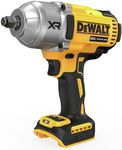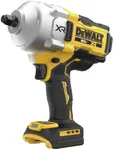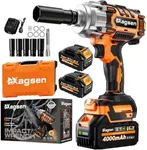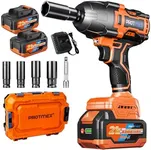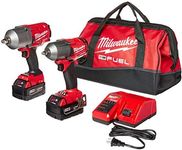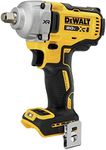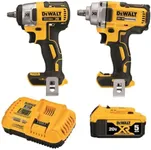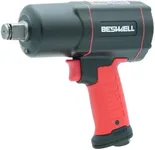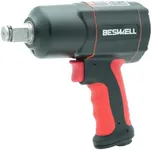Buying Guide for the Best Half Inch Cordless Impact
Choosing the right half-inch cordless impact wrench can make a significant difference in your work efficiency and comfort. These tools are essential for tasks that require high torque, such as automotive repairs, construction, and heavy equipment maintenance. When selecting a cordless impact wrench, it's important to consider several key specifications to ensure you get a tool that meets your needs and performs reliably in your specific applications.TorqueTorque is the rotational force that the impact wrench can apply. This is crucial because it determines the tool's ability to loosen or tighten bolts and nuts. Torque is usually measured in foot-pounds (ft-lbs). For light-duty tasks, such as small automotive repairs, a torque rating of 100-200 ft-lbs may be sufficient. For medium-duty tasks, like working on larger vehicles or machinery, look for a torque rating of 200-400 ft-lbs. For heavy-duty applications, such as industrial equipment or large trucks, you may need a torque rating of 400 ft-lbs or more. Choose a torque level based on the toughest job you expect to handle.
Battery LifeBattery life determines how long you can use the impact wrench before needing to recharge. This is important for uninterrupted work, especially in remote locations where charging may not be convenient. Battery life is influenced by the battery's ampere-hour (Ah) rating. A higher Ah rating means longer battery life. For occasional use, a 2.0 Ah battery might be sufficient. For regular use, consider a 4.0 Ah battery. For heavy, continuous use, a 5.0 Ah or higher battery is ideal. Match the battery life to your work habits and the duration of your typical tasks.
SpeedSpeed, measured in revolutions per minute (RPM), affects how quickly the impact wrench can complete a task. Higher speeds can make quick work of fastening or loosening bolts, but may also require more control to avoid over-tightening. For general use, a speed range of 0-2,000 RPM is common. For more precise control, look for models with variable speed settings. If you frequently work on delicate or varied tasks, a tool with multiple speed settings will offer greater versatility.
WeightThe weight of the impact wrench affects user comfort and fatigue, especially during extended use. Lighter tools are easier to handle and maneuver, but may offer less power. Heavier tools can provide more torque but can be tiring to use for long periods. For occasional or light-duty use, a lighter tool (around 3-4 pounds) is preferable. For more demanding tasks, a heavier tool (5-7 pounds) may be necessary. Consider the balance between power and comfort based on how long and how often you will use the tool.
ErgonomicsErgonomics refers to the design of the tool and how comfortable it is to use. This includes the handle design, grip material, and overall balance of the tool. Good ergonomics reduce strain and increase productivity. Look for features like rubberized grips, well-balanced weight distribution, and easy-to-reach controls. If you will be using the tool frequently or for long periods, prioritize ergonomic features to minimize discomfort and fatigue.
DurabilityDurability is about how well the impact wrench can withstand tough working conditions and frequent use. This is important for ensuring a long lifespan and reliable performance. Look for tools made with high-quality materials, such as metal gear housings and impact-resistant casings. Check for features like brushless motors, which tend to last longer and require less maintenance. If you work in harsh environments or use the tool heavily, prioritize durability to avoid frequent replacements or repairs.
